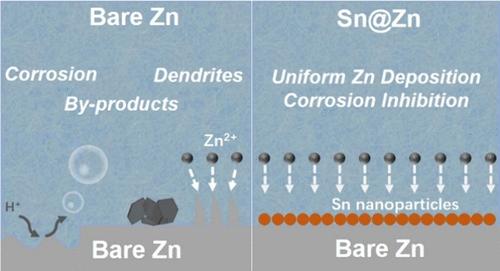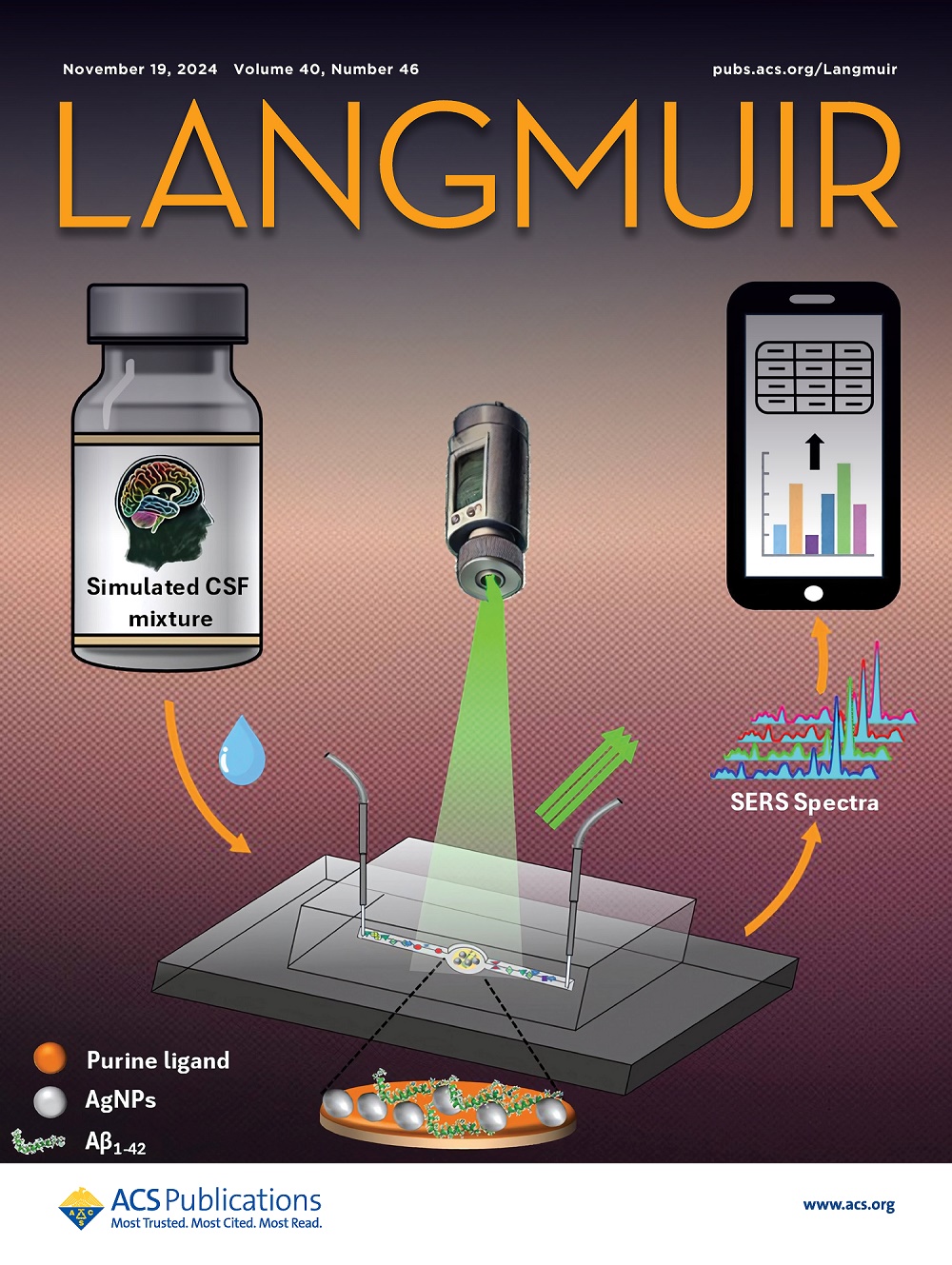Optimization of the Zinc Deposition Interface by Sn Nanoparticles for Fast-Charging Zinc Metal Anodes
IF 3.7
2区 化学
Q2 CHEMISTRY, MULTIDISCIPLINARY
引用次数: 0
Abstract
The electrodeposition behavior of zinc metal anodes critically correlates with the electrode surface properties. The tendency for inhomogeneous deposition of zinc is more severe, especially under high current density. Herein, the surface structure of zinc and zinc deposition substrates is reconstructed with a uniform metal tin (Sn) coating via a simple evaporation method. Sn nanoparticles can serve on metal nuclei to reduce the Zn nucleation barrier and enable more nucleation sites for even deposition. Moreover, the mechanical stability of the electrode surface is improved via Zn–Sn alloying. Consequently, the uniform Zn deposition/dissolution behavior on Sn-modified two- and three-dimensional copper substrates is reflected in the stable Coulombic efficiency and reduced polarization. The Sn@Zn electrode is endowed with superior stability at a high current density (800 h at 20 mA cm–2). More encouragingly, the full cell installed with a carbon nanotube/MnO2 cathode maintains enduring stability (700 cycles) at 1 A g–1. This work enlightens metal alloy as an effective and instructive modification strategy toward stabilized zinc anodes.

快速充电锌金属阳极中Sn纳米粒子锌沉积界面的优化
锌金属阳极的电沉积行为与电极表面性能密切相关。锌的不均匀沉积趋势更为严重,特别是在高电流密度下。本文通过简单的蒸发方法,用均匀的金属锡(Sn)涂层重建锌和锌沉积衬底的表面结构。锡纳米粒子可以作用于金属核上,从而减少锌的成核屏障,从而使更多的成核位点均匀沉积。此外,锌锡合金化还提高了电极表面的机械稳定性。因此,在锡修饰的二维和三维铜衬底上均匀的锌沉积/溶解行为反映在稳定的库仑效率和降低的极化上。Sn@Zn电极在高电流密度(800 h, 20 mA cm-2)下具有优越的稳定性。更令人鼓舞的是,安装了碳纳米管/二氧化锰阴极的完整电池在1 a g-1下保持持久的稳定性(700次循环)。本研究为金属合金作为稳定锌阳极的有效改性策略提供了启示。
本文章由计算机程序翻译,如有差异,请以英文原文为准。
求助全文
约1分钟内获得全文
求助全文
来源期刊

Langmuir
化学-材料科学:综合
CiteScore
6.50
自引率
10.30%
发文量
1464
审稿时长
2.1 months
期刊介绍:
Langmuir is an interdisciplinary journal publishing articles in the following subject categories:
Colloids: surfactants and self-assembly, dispersions, emulsions, foams
Interfaces: adsorption, reactions, films, forces
Biological Interfaces: biocolloids, biomolecular and biomimetic materials
Materials: nano- and mesostructured materials, polymers, gels, liquid crystals
Electrochemistry: interfacial charge transfer, charge transport, electrocatalysis, electrokinetic phenomena, bioelectrochemistry
Devices and Applications: sensors, fluidics, patterning, catalysis, photonic crystals
However, when high-impact, original work is submitted that does not fit within the above categories, decisions to accept or decline such papers will be based on one criteria: What Would Irving Do?
Langmuir ranks #2 in citations out of 136 journals in the category of Physical Chemistry with 113,157 total citations. The journal received an Impact Factor of 4.384*.
This journal is also indexed in the categories of Materials Science (ranked #1) and Multidisciplinary Chemistry (ranked #5).
 求助内容:
求助内容: 应助结果提醒方式:
应助结果提醒方式:


